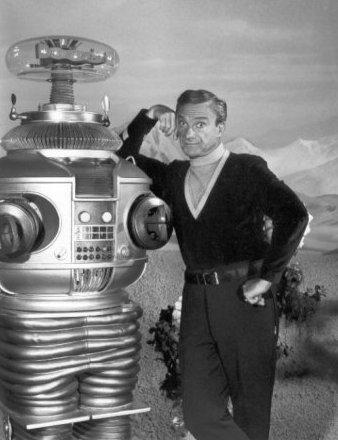
Timelines 10
Man and his Senses 10
Man and his Inventions 10
Geography 10
Fauna 10
Timelines 10
Man and his Senses 10
Man and his Inventions 10
Geography 10
Fauna 10

There are moments when a word becomes a map. “Robot” is one such word: coined in Czech theatre (the 1921 play R.U.R., by Karel Čapek, using the new word robota) it entered modern languages as a way to think about work, bodies and machines. That literary coinage — often attributed to Josef Čapek as inventor of the term and popularised by his brother Karel — has left a cultural trace. It's origin is symbolic: the Czech lands supplied not only an idea but, over the subsequent century, a practical conversation about automation, precision and manufacture that continues to shape how societies imagine mechanised labour.
This symbolism matters because words make frameworks: they give nations a place in the history of a technology before factories and algorithms make those technologies commonplace. In Central Europe the cultural memory of the robot sits beside a tradition of mechanical craft and engineering. That tradition has fed small industrial clusters, specialist engineering firms and a public familiar with precision engineering. The historical intimacy with the concept — from its origin in a theatre to trade — is less a fixed origin story than a historical anchor. It is the beginning of a long conversation about how machines can stand beside, augment or displace human work.
If Czech Republic gave the word, India is delivering the numbers. Recent international data show a sharp acceleration in industrial robot installations in India: sales reached a new record of 4,945 units installed (a 54 percent year-on-year increase) and the number of robots in use more than doubled to reach tens of thousands of units in a five-year span — trends that place India among the fastest-growing robot markets globally. The bulk of those installations remains in manufacturing (notably the automotive sector), but the pattern is unmistakable: from small clusters of automation to national scale adoption, India’s factories and logistics hubs are taking on robotics at speed.
Numbers alone, however, do not explain why this matters for work. The contemporary robotics story has an engine and a set of levers. The engine is software — notably computer vision and AI — that makes robots perceptive rather than merely repetitive. Indian industry and research now routinely pair arms and actuators with vision systems that allow robots to inspect, pick, navigate and collaborate. In practice, robots equipped with computer vision move beyond fixed-point tasks: they perform inspection, identification, navigation and increasingly complex assembly and medical applications. That upgrade changes the nature of what automation can do in factories, hospitals and warehouses.

The levers for this are policy and market structure. Indian government programmes and incentives for advanced manufacturing — including production-linked schemes, investment in training and the growth of domestic component suppliers — have produced an ecosystem where robot makers, integrators and end users can scale more quickly. Market research points to wider economic effects: industry reports put the India robotics market at about USD 1.70 billion in 2024 and forecast robust growth (a double-digit growth rate) through the decade, driven by industrial, healthcare and service-robot applications. In short: policy, demand and finance are aligning.
There is a social, labour oriented dimension that follows from these technical changes. Robots in India are not merely about replacing hands on an assembly line: they are remaking roles and skills. As robots assume repetitive or hazardous tasks, human work shifts toward supervision, programming, quality control and systems maintenance. Educational initiatives and industry partnerships — from school robotics programmes to corporate training academies — are part of the response. The net effect is contested and uneven: the same automation that raises productivity also demands reskilling, and the public discourse now centres on how to channel automation into job creation rather than displacement.
A clear difference separates the Czech and Indian chapters, and it is instructive. In Czechia's case, the country’s relation to the robot is cultural and industrially mature: the term’s origin in Czech literature sits beside small but sophisticated engineering sectors. India’s relation is contemporary and expansive: a late entrant to mass robotics that is leaping, via software and scale, into multiple sectors at once. Where Prague’s claim is part symbolic, part artisanal, India’s claim is statistical and infrastructural — rapid installations, rising robot density in factories, and a market that expects severalfold expansion in the coming decade. Both claims are real; they simply register at different moments in the life cycle of a technology.
Technology itself points to the next shift: AI and computer vision do not merely make robots faster; they make them adaptable. In warehouses, vision-guided pick-and-place arms can reconfigure for different product types; in hospitals, visual systems assist robotic surgery and diagnostics; in logistics, perception enables safe human-robot collaboration. India’s research and start-up ecosystem is already weaving these capabilities into local needs — from cost-sensitive pick-and-place solutions to vision systems trained on domestic datasets — and that focus creates a distinct pathway: automation shaped to Indian workplaces rather than simply imported.
There are, finally, wider lessons for how work will be organised.
Sources:
https://tinyurl.com/2xlf7pjw
https://tinyurl.com/2bqjvspb
https://tinyurl.com/2cummf99
https://tinyurl.com/29ta2ef8
https://tinyurl.com/28pmbpft
https://tinyurl.com/2b2s4dtw
https://tinyurl.com/23cnketz
https://tinyurl.com/27gd4nox